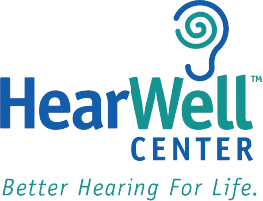Exciting News: HR1646 has hit 115 co sponsors which tops the previous record of 112 set at the end of both the 109th and 110th Congress.
What would H.R. 1646, the Hearing Aid Assistance Tax Credit Act, do?
Provide a tax credit of up to $500 per hearing aid, available once every 5 years, towards the purchase of a hearing aid, available to: 1) individuals age 55 and over, or 2) those purchasing a hearing aid for a dependent. The bill includes a $200,000/year income eligibility cap.
Why is this special tax treatment needed for hearing aids?
While 95% of individuals with hearing loss could be successfully treated with hearing aids, only about 25% of the 34 million Americans with hearing loss (8.4 million people) used them in 2008 according to the most recent ˜MarkeTrak ™ report, the largest national consumer survey on hearing loss. Hearing aids are not covered under Medicare, or under the vast majority of state mandated benefits. In fact, 61% of hearing aid purchases involve no third party payment according to the most recent MarkeTrak report. This places the entire burden of the purchase on the consumer. 33% of individuals with hearing loss have incomes of less than $30,000 per year according to the Better Hearing Institute, and household incomes of individuals with untreated hearing loss are usually much lower than their non hearing impaired counterparts. 68% of those with hearing loss cite financial constraints as a core reason they do not use hearing aids. The average cost for a hearing aid in 2008 was $1,675 including fitting, evaluation and post fitting treatment, according to Marketrak. Nearly 80% of individuals with hearing loss required two devices in 2008, increasing average out of pocket expenses to $3,350.
What is the extent of the problem with hearing loss in the U.S.?
Hearing loss is among the most prevalent birth defects in America, affecting 3 infants per 1,000 births. 1.2 million children under 18 have a hearing loss.
For adults, hearing loss usually occurs gradually, but increases dramatically with age. 10 million older Americans have age related hearing loss.
One of the goals of Healthy People 2010, an HHS led program, is to ˜increase the number of deaf or hard of hearing people who use adaptive devices, such as hearing aids. ™ H.R. 1646 is the most cost effective means to accomplish this goal.
What is the cost impact of untreated hearing loss?
Children who do not receive early intervention cost schools an additional $420,000 and are faced with overall lifetime costs of $1 million in special education, lost wages, and health complications, according to a 1995 study published in the International Journal of Pediatric Otorhinolaryngology. The Department of Education indicates that over 70,000 students, ages 6 21, received special education services in 2002 alone, due to their hearing loss.
For taxpayers, a 2005 survey by the Better Hearing Institute on Impact of Untreated Hearing Loss on Household Income extrapolated data on income levels from 43,000 heads of households. The study compared normal hearing people with those who had a hearing loss. The data shows that untreated hearing loss results in a loss of income per household of up to $12,000 per year. For the 24 million (at the time of the study) Americans with untreated hearing loss, this translates to $122 billion in unrealized income and a cost to society of $18 billion annually in unrealized federal income taxes (15% bracket).
For workers, noise induced hearing loss is the most common occupational disease and the second most self reported occupational injury.
For seniors, untreated hearing loss causes additional costs to Medicare and other health programs due to loss of independence, social isolation, depression, safety issues, and quality of life. The Senate Special Committee on Aging, in S. Rpt. 107 74, noted: ˜As the wave of seniors begins to experience age related disability, our current long term care system will not be able to support this demographic shift. ™ Hearing aids help enable seniors to retain their independence and avoid other long term care costs.
In 1999, the National Council on the Aging (NCOA) conducted the largest known study on the effects of untreated hearing loss among adults and their families. The study quantified both the negative results of untreated hearing loss and the positive impact of hearing instruments on an individual ™s quality of life. It found that impaired hearing results in distorted communication, isolation, withdrawal, reduced sensory input, depression, anger, and severely reduced overall psychological health.
Conversely, hearing aid usage results in:
Increased earnings power, of around 50% Enhanced emotional and mental stability and reduced anger, anxiety, depression and paranoia reduced social phobias and improved interpersonal relationships
Who supports this legislation?
In an unprecedented fashion, the hearing health community has rallied behind this bill; include major organizations of people with hearing loss, parents of children with hearing loss, hearing healthcare providers, educators, and manufacturers. Endorsing groups include Alexander Graham Bell Association for the Deaf and Hard of Hearing, Academy of Doctors of Audiology, American Academy of Audiology, American Speech Language Hearing Association, the Deaf and Hard of Hearing Alliance, Deafness Research Foundation, Hearing Industries Association, Hearing Loss Association of America and the International Hearing Society. AARP supports companion bill S1019.
Source: Andy Bopp, Director of Government Relations, Hearing Industries Association
Personal Note: I have been contacting my legistlators and and I hope you will too. Go to the Better Hearing Institute Hearing Aid Tax Credit Site for more information about how you can make a difference.
Better Hearing Institute: http://www.hearingaidtaxcredit.org/
This blog posted by Suzanne Yoder, Au.D. Doctor of Audiology and owner of HearWell Center. Please visit our website for more information http://www.hearwellcenter.com/





